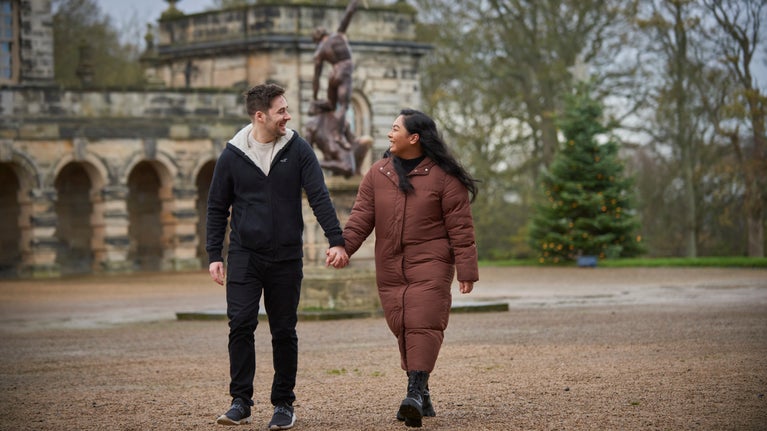
Become a member
Join today and help protect nature, beauty and history – for everyone, for ever. Enjoy access to more than 500 places with National Trust membership.

This stretch of the Wales Coast Path is popular for its rich history, sandy bay, caves, and ancient rock formations. The cliffs are home to the many choughs which can be seen and heard in the area.
It is hard to miss the amazing and ancient rock formations around this rugged coastline.
The research into the geology of Môn (Anglesey) and Wales has had a significant historical impact on the growth of geology as a science.
Many of the rocks on Môn have undergone a process known as metamorphism, which involves being heated, buried deeply, and modified. The rocks of folds and strata that you will see around the coastline of Porth Dafarch went through metamorphism around 600 million years ago.

Listen out for the chough’s ‘chee-ow’ and be mesmerised by their acrobatic swoops and dives along the coastline. The chough is the least common member of the crow family, easily recognised by its red bill and legs.
Choughs typically live along high coastal ledges because they prefer to nest in sea caves, abandoned structures, or cracks and fissures in cliffs. Here in the UK they are only found on the far Western rocky shores and are reliant on management of grazing to offer sufficient foraging grounds.
Porth Dafarch is also a great location for spotting marine life. If you’re patient, you might catch a glimpse of a porpoise coming up for air or see some seals basking on the rocks or bobbing in the waves.
Porth Dafarch offers great snorkelling and rockpooling opportunities for those interested in sea life and is a popular destination for kayakers due to the many crags and sea caves dotted around the area.

The largest shipwreck in Anglesey lies off the coast of Porth Dafarch. The Missouri, a 3,000-ton vessel was sailing from Boston in the United States to Liverpool, carrying a cargo of cattle, cotton and palm oil.
Heavy winds and snow drove the ship onshore at Porth Dafarch. Efforts were made by the Holyhead lifeboat and cliff rescue team to save the Missouri from wrecking but unfortunately failed. However, the crew onboard all survived. Later, much of the cargo was retrieved, but sadly only 50 of the 395 cattle onboard the vessel were saved.
Today Porth Dafarach is a popular location for scuba divers wanting to explore the famous wreck, along with the plethora of marine life.
In the field right behind the beach and car park lies an ancient settlement dating back to the prehistoric era. In Welsh they are called ‘Cytiau’r Gwyddelod’ which translates to Irishmen’s huts. This term can be deceptive, as there is no historical relationship between them and the Irish. Irish tribes have occasionally resided in west Wales in the past, which undoubtedly explains the name given to these archaeological ruins.
Due to its potential to advance our understanding of prehistoric settlement and burial, the monument is significant on a national level. It is possible to anticipate that the structures themselves will hold archaeological data pertaining to date and construction methods.

Join today and help protect nature, beauty and history – for everyone, for ever. Enjoy access to more than 500 places with National Trust membership.
Enjoy views of Plas Newydd across the rushing tide of the Menai Strait.

Discover the peaceful woodland on the northern shores of the Menai Strait. Walk under the Britannia Bridge on paths that weave in and out of the canopy and visit the bird hide to see cormorants and wading birds.
